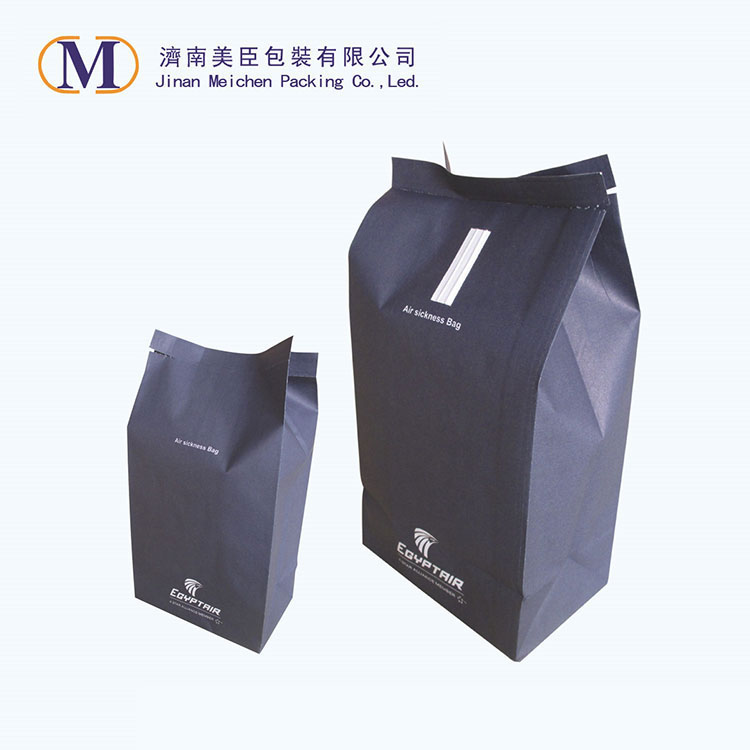Understanding Airsickness Bags: Everything You Need to Know
2025-01-13
What is an Airsickness Bag?
An airsickness bag is a small, disposable bag provided by airlines for passengers who may experience motion sickness during a flight. These bags are designed to be used in case of nausea or vomiting, offering a hygienic and convenient way for travelers to manage their symptoms. Typically, airsickness bags are made of durable, leak-proof materials to contain any liquids and odors.
Why Do Airlines Provide Airsickness Bags?
Airlines provide airsickness bags for passenger comfort and safety. During flights, especially on turbulent or long journeys, some passengers may experience motion sickness, which can cause nausea, dizziness, and vomiting. By offering airsickness bags, airlines ensure that passengers have a safe and discreet option for dealing with these uncomfortable symptoms. These bags help maintain cleanliness in the cabin and provide a hygienic solution for an otherwise unpleasant situation.
What Are Airsickness Bags Made Of?
Airsickness bags are typically made from strong, leak-proof paper or plastic materials. Some bags feature an additional plastic liner to prevent leaks and contain odors. The design of the bag usually includes a wide opening at the top for easy use and a foldable or compact shape for easy storage. Some airlines may also add a sealable closure to prevent spillage or odors after use.
Are Airsickness Bags Reusable?
No, airsickness bags are designed for single-use only. Once the bag has been used, it is typically sealed and disposed of in the cabin's waste bins. This is primarily for hygienic reasons, as reusable bags could harbor bacteria or unpleasant odors. However, in some cases, if the bag is unused and unopened, passengers may keep it for future use, though this is not common.
How Do Airsickness Bags Help with Motion Sickness?
Airsickness bags provide an immediate solution for passengers who experience motion sickness. The disposable bag allows passengers to discreetly deal with nausea and vomiting without making a mess in their seat area or disturbing other passengers. Additionally, the availability of an airsickness bag can reduce the anxiety associated with motion sickness by providing a sense of preparedness and reassurance.
Are There Alternatives to Airsickness Bags?
While airsickness bags are the most common method of dealing with motion sickness on a flight, there are several alternatives for passengers looking for other remedies. Some common alternatives include:
1. Motion Sickness Tablets: Medications such as Dramamine or Bonine can help prevent or reduce the symptoms of motion sickness. These medications are often taken before the flight to help passengers feel more comfortable.
2. Pressure Point Wristbands: These bands apply gentle pressure to acupressure points on the wrists, which some people find helpful in alleviating nausea.
3. Ginger: Known for its anti-nausea properties, ginger can be consumed in various forms, such as ginger candies, tea, or capsules, to help settle the stomach during a flight.
4. Fresh Air: Opening the air vent above your seat or taking deep breaths of fresh air can sometimes help reduce feelings of nausea caused by motion sickness.
How Can I Prevent Motion Sickness During a Flight?
While some passengers are more prone to motion sickness than others, there are several steps you can take to reduce your chances of feeling ill during a flight:
1. Choose the Right Seat: Try to sit over the wings of the plane, where the motion is less noticeable. Avoid sitting in the back of the plane, as this area tends to experience more movement.
2. Look at the Horizon: Focusing on a stable point, such as the horizon, can help your body adjust to the movement of the plane.
3. Stay Hydrated: Drink plenty of water before and during your flight to stay hydrated, as dehydration can worsen motion sickness.
4. Avoid Heavy Meals: Eating light meals before the flight can help prevent nausea. Avoid greasy or spicy foods that could upset your stomach.
5. Avoid Strong Smells: Perfumes, food odors, and other strong smells in the cabin can trigger motion sickness. If you're sensitive to smells, consider bringing a scarf or mask to cover your nose.
Can I Take My Own Airsickness Bag on a Flight?
Yes, passengers are generally allowed to bring their own airsickness bags if they feel more comfortable with a specific type. However, most airlines provide their own bags during the flight, so carrying your own may not be necessary unless you prefer a particular brand or design. Just ensure that the bag meets airport security regulations if you’re bringing it through security.
Are Airsickness Bags the Same Across All Airlines?
No, airsickness bags can vary from airline to airline. While the basic function of the bag remains the same, some airlines may provide bags with additional features, such as:
1. Branding: Some airlines print their logo or design on the bags for branding purposes.
2. Size and Shape: Airsickness bags can come in different sizes, with some being larger for longer flights or smaller for shorter trips.
3. Material: The material may vary, with some airlines opting for more environmentally friendly options like biodegradable bags or bags made from recycled materials.
What Happens to Airsickness Bags After They Are Used?
After the airsickness bag has been used, passengers are usually instructed to seal it and dispose of it in the trash. Flight attendants will typically provide a waste collection bag or collect the used bags during the flight. Airlines ensure that the bags are disposed of properly to maintain cleanliness and hygiene in the cabin.
Do Airsickness Bags Have Any Other Uses?
While airsickness bags are designed for emergency use during a flight, they can also serve other practical purposes. For example, they can be used as:
1. Trash Bags: If you need to dispose of small items like tissues, candy wrappers, or receipts, an airsickness bag can be handy.
2. Storage: Passengers sometimes use them to store personal items like used tissues, pens, or snacks during the flight.
3. Emergency Bags: In situations where a bag is needed for quick storage, an airsickness bag can be a temporary solution.
Conclusion
Airsickness bags are an essential part of air travel, providing a practical and hygienic solution for passengers who experience motion sickness. These bags are specifically designed to offer comfort and cleanliness during a flight, ensuring that passengers can manage nausea or vomiting discreetly. While there are other remedies for motion sickness, having an airsickness bag on hand can make all the difference in ensuring a smooth and comfortable journey. Whether you're flying for business or pleasure, knowing about airsickness bags and their use can help you be better prepared for any discomfort that may arise during your flight.



